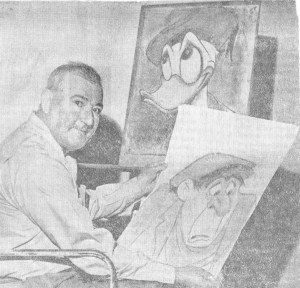
The Walt Disney Corporation has such a good family-friendly image. It really styles itself as an ideal place to work. We can only imagine that things were even better in Disney’s golden era, when the man himself was still running things. But that wasn’t always the case; in fact, in 1941 hundreds of Disney animators went on strike.
The Business Insider has some fantastic photographs of and other images from the strike, and of the materials the strikers were circulating. But it’s a bit lacking on the specific details of why animators would go on strike, especially so soon after the fabulous success of “Snow White.”
The late 30s and early 40s may seem like an amazing time for the Walt Disney Company, but that isn’t quite true. Early in the studio’s history Walt Disney gave his employees 20% of the profits generated by the short cartoons the studio was known for making. But “Snow White” was a big gamble for the company; feature-length animated films were unheard of, and many people thought the film would flop.
So in 1936, Walt Disney stopped giving those profits to his animators. The staff had gotten much bigger in order to accommodate the additional work “Snow White” required, and because of the gloomy projections for the film, Walt decided to play it safe. That didn’t go over well with his staff, especially because many of them had worked overtime, for free, to complete the film.
Tensions only grew when “Snow White” turned out to be a huge success, but the profit-sharing wasn’t reinstated. Instead, Walt just increased the salaries of chosen animators that he felt had done an especially good job. The move drew lines in the sand between some of his employees; the ones who didn’t get the increase were promised increases on future films if their work improved. It was also unpopular with those who received the bonus – they ended up hitting the government’s ceiling for wages and were no longer eligible for time-and-a-half overtime.
The situation only got worse. War breaking out in Europe cut off 40% of the studio’s market overseas, which led to “Pinocchio” and “Fantasia” doing poorly. The studio couldn’t hand out their promised bonuses. Tensions at other animated studios, such as Warner Brothers, spread to Disney. In 1941 Walt fired Art Babbitt, one of his animators who had become a union leader in the Screen Cartoonists Guild. That was the last straw, and the Disney animators went on strike.
The strike bled through into Disney’s movies. “Dumbo” was in production during the strike, and there’s a scene in the film where a group of clowns rabble rouse to get more money from their boss. Many see this as a commentary on then-current events.
Funnily enough, it was Walt’s trip to Central and South America, at the behest of the State Department, that brought an end to the strike. With the Big Man out of the office for a while, tensions eased. A federal moderator came in to negotiate on the strike, siding with the Guild on all points. The Walt Disney Studio signed a proposed contract, and the strike ended.
This wasn’t the only time there were tensions in the Animator’s Studio at Disney, but it’s noteworthy for being the first big example, and for happening under the leadership of Walt himself.
*(This image by alan.light is licensed under the Creative Commons Attribution 2.5 License.)

